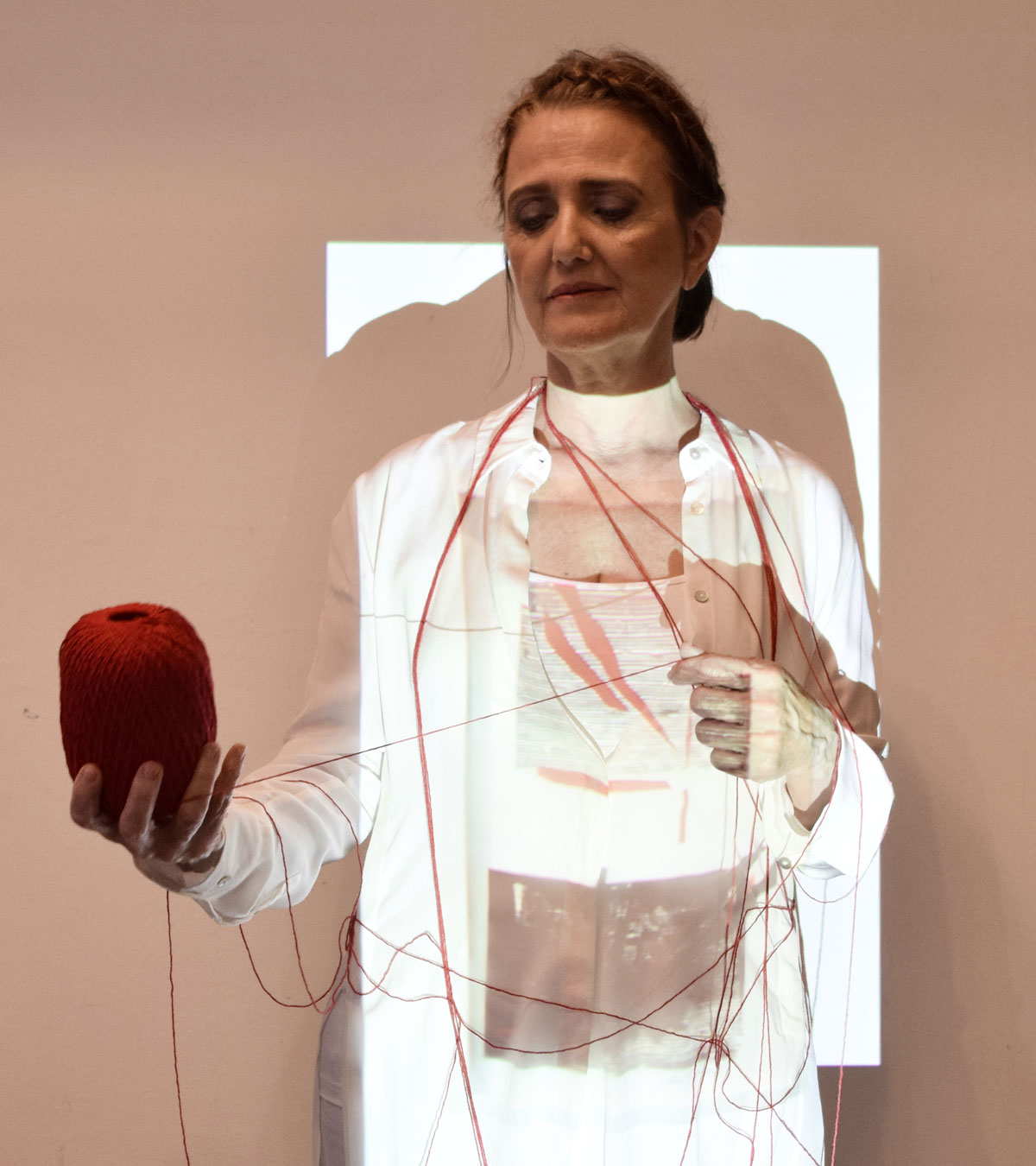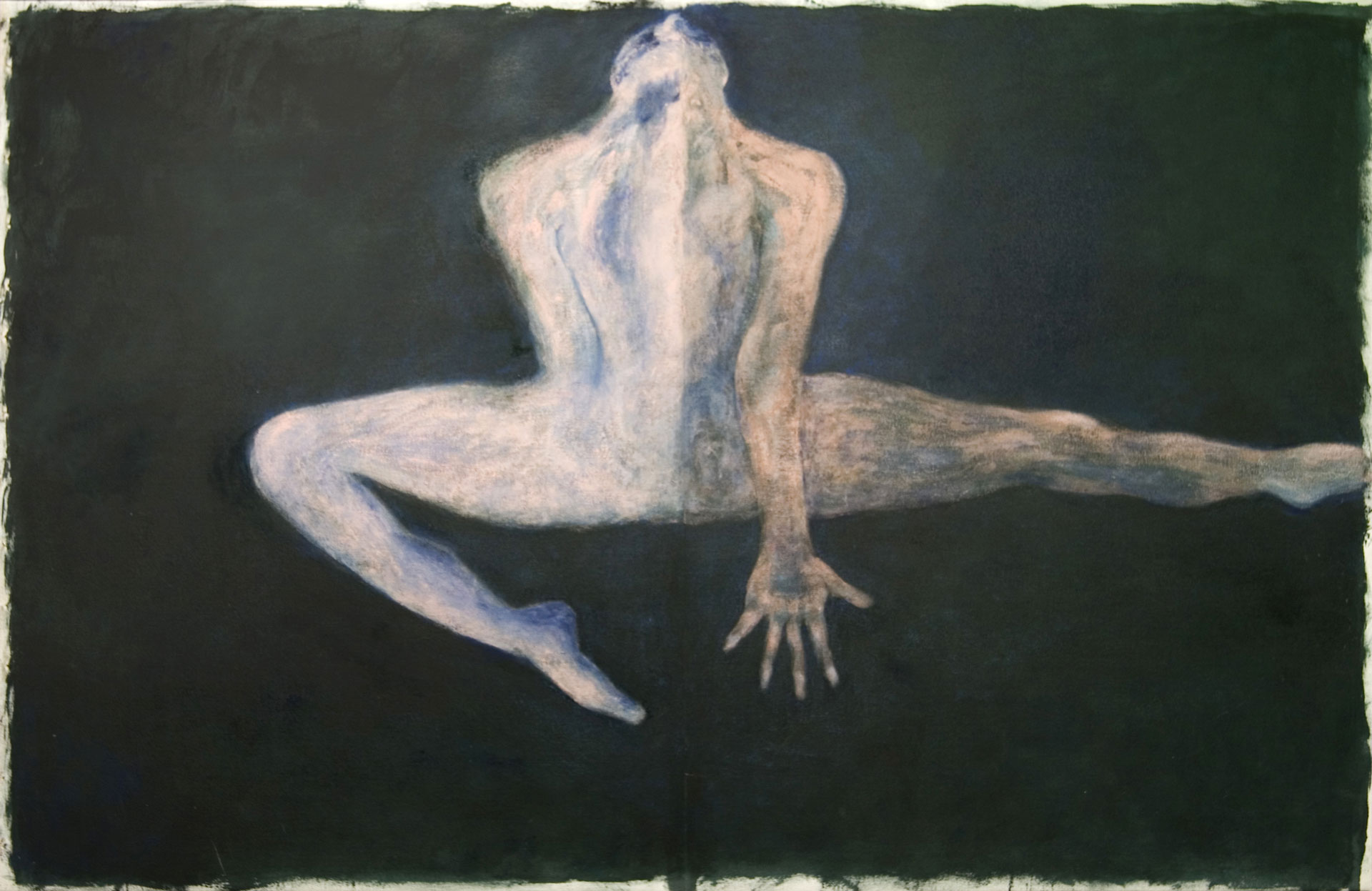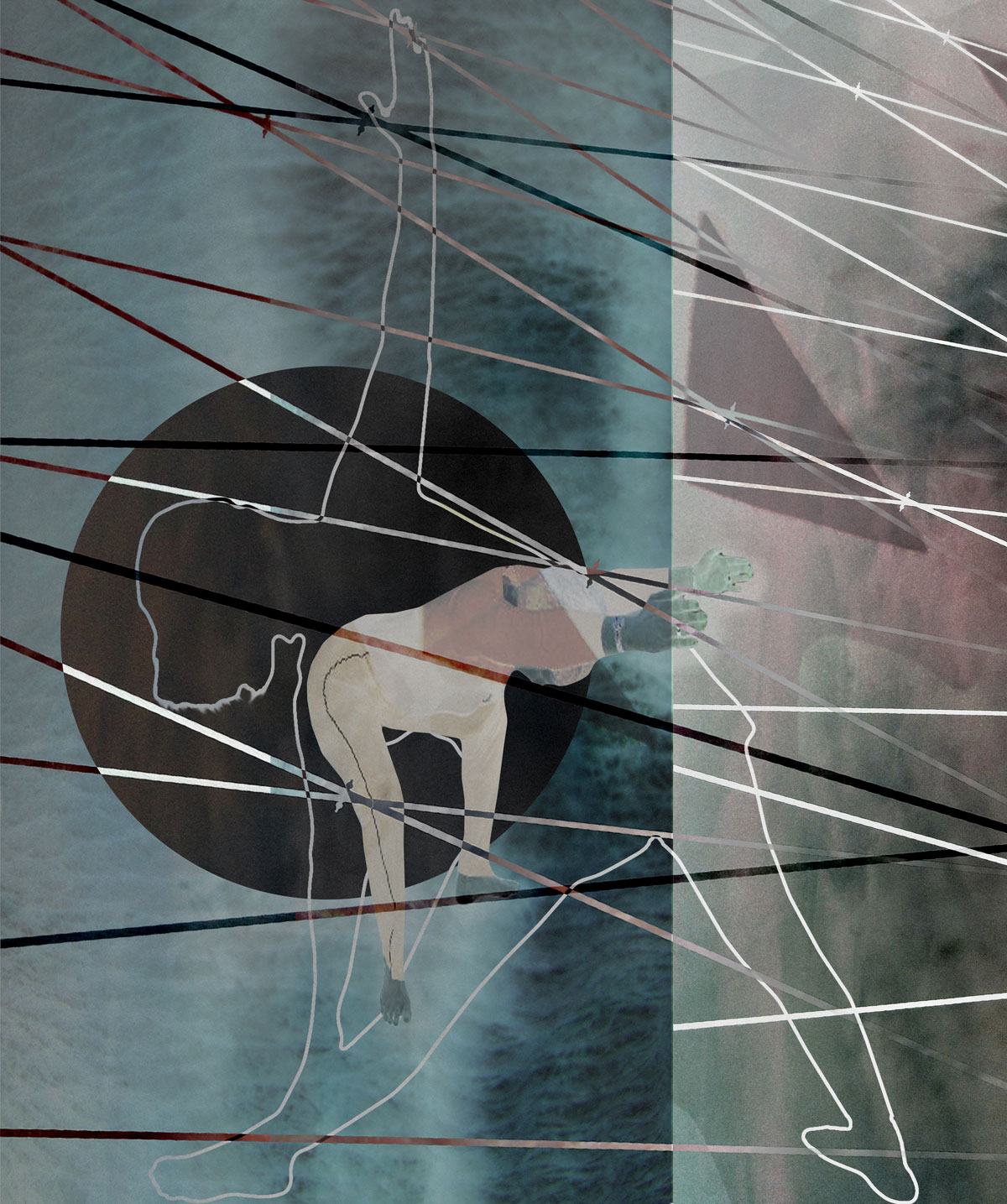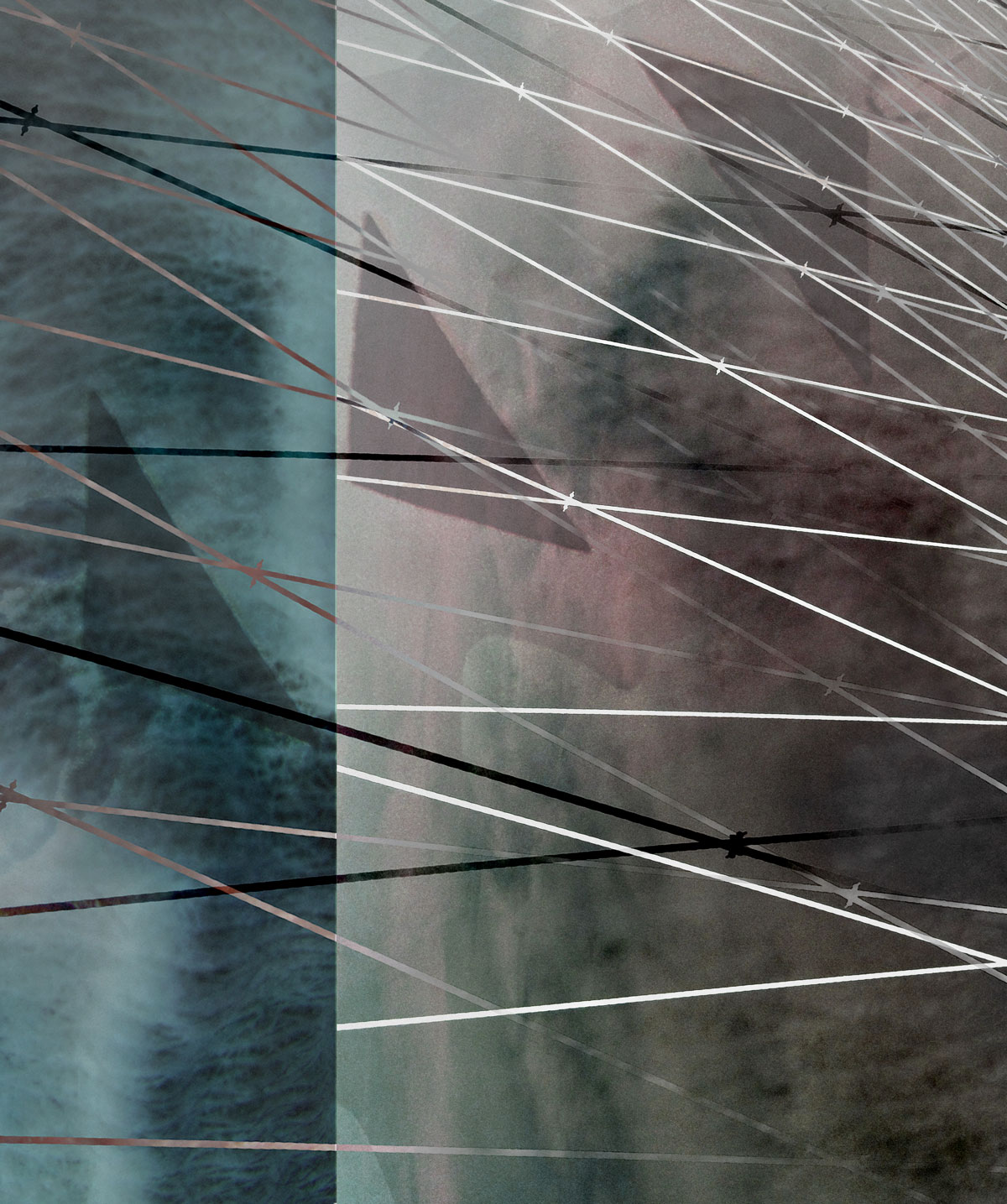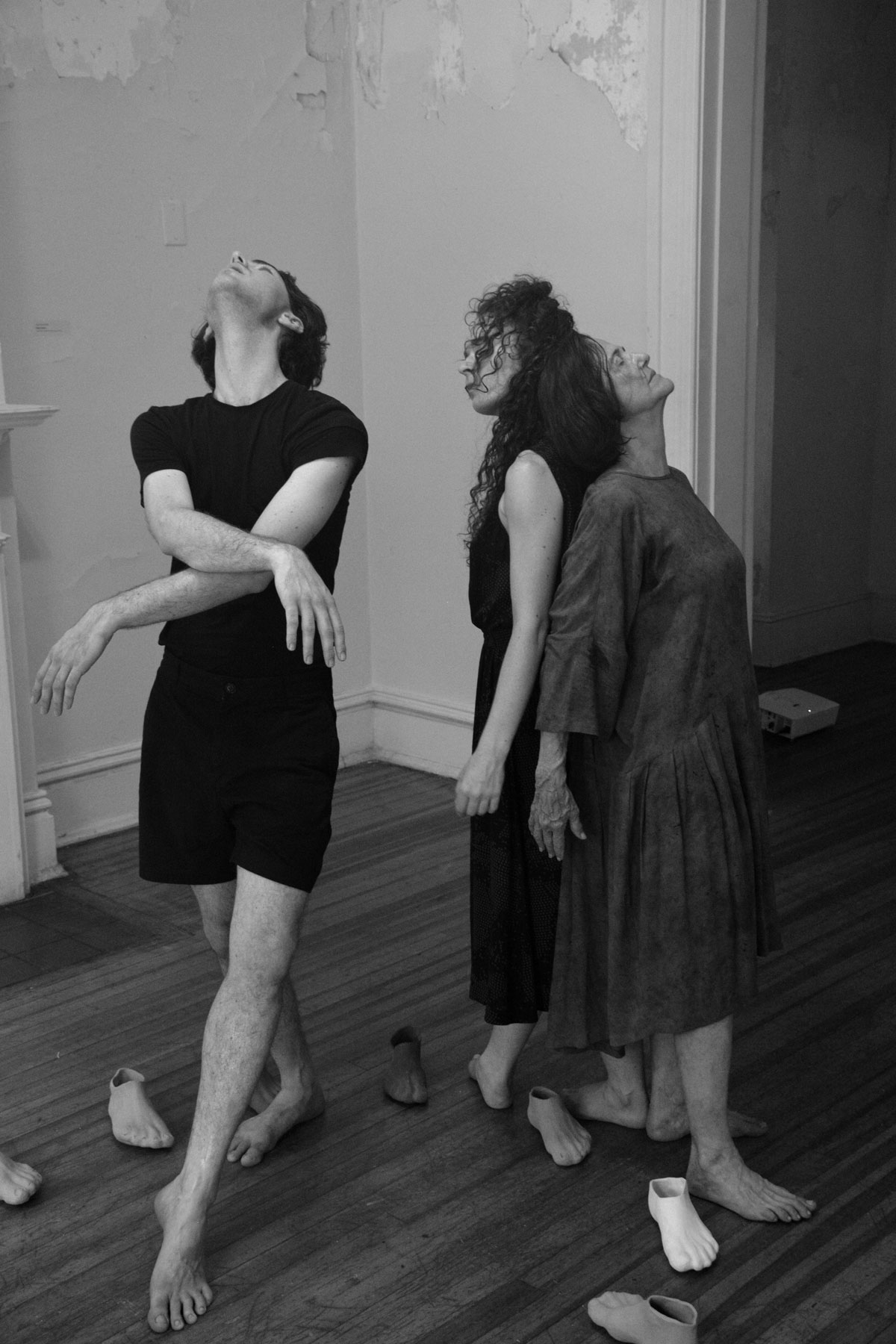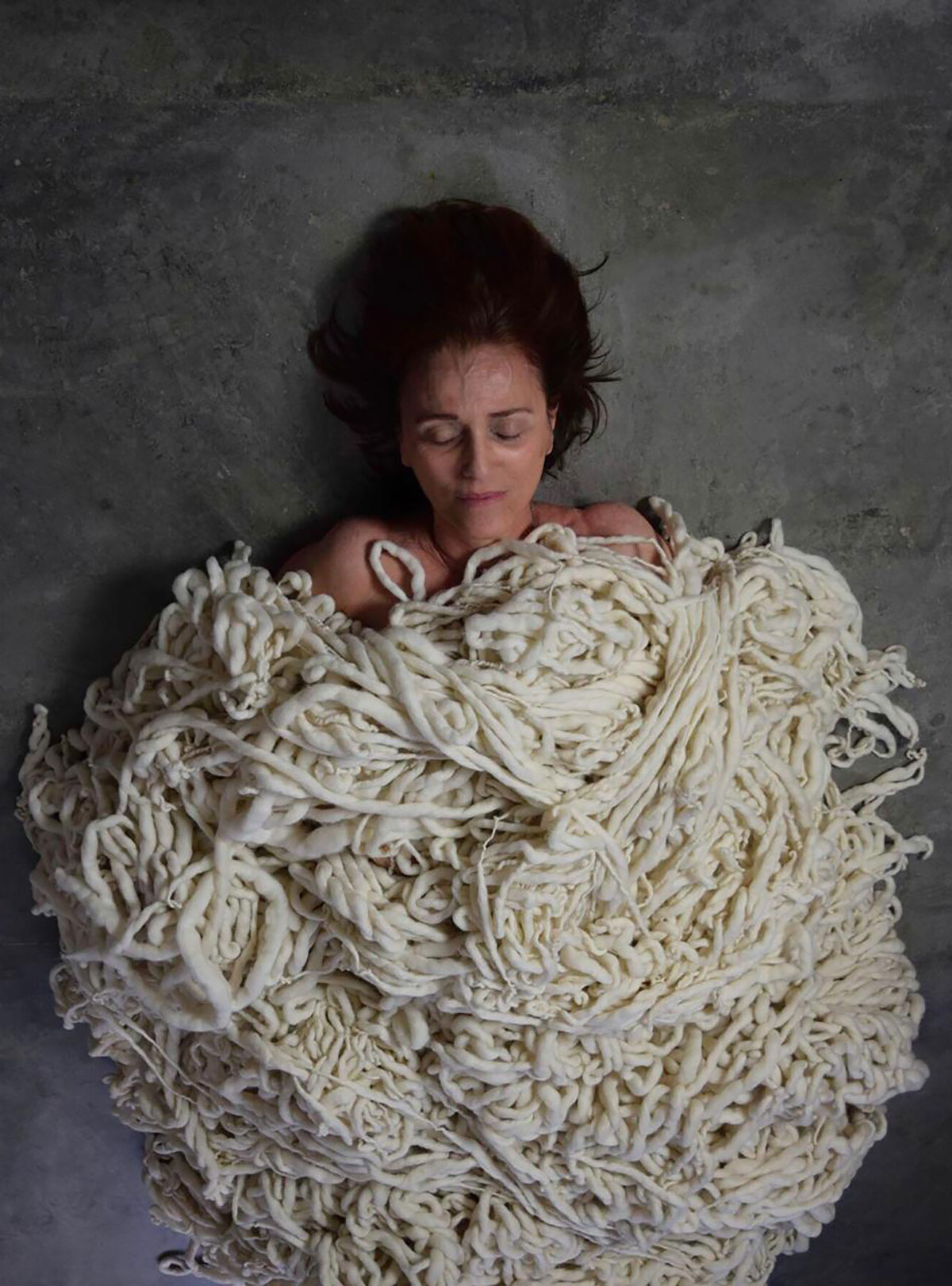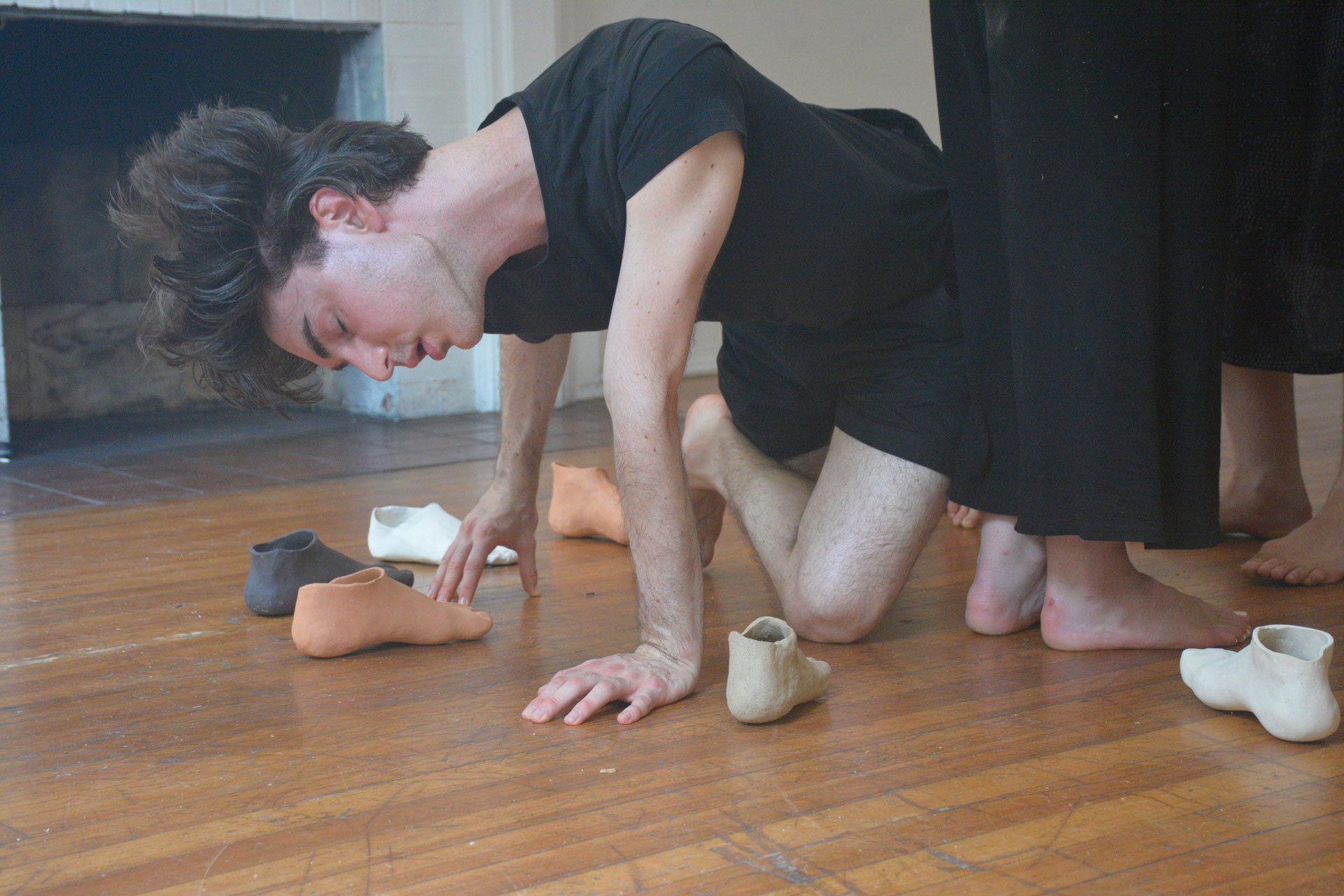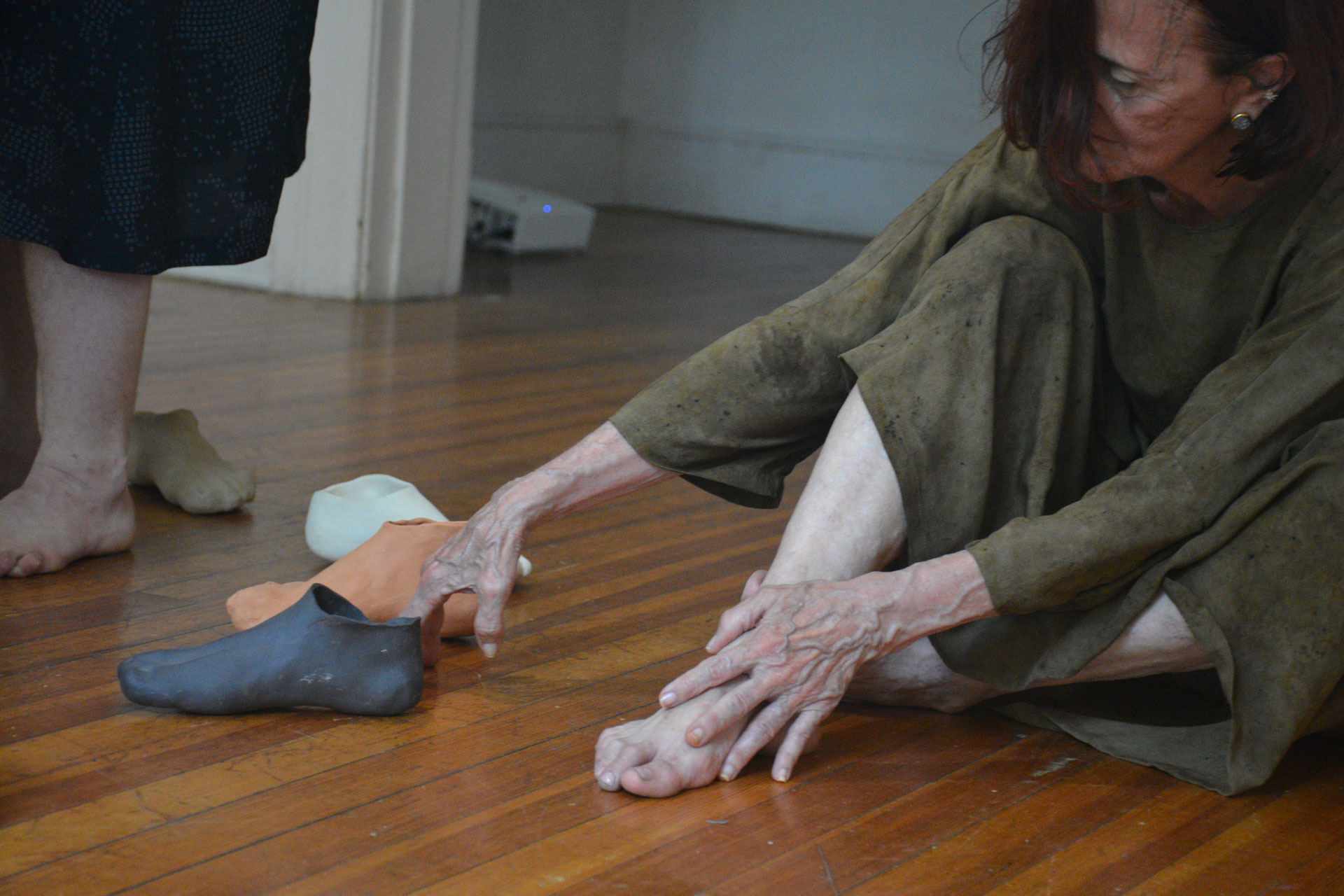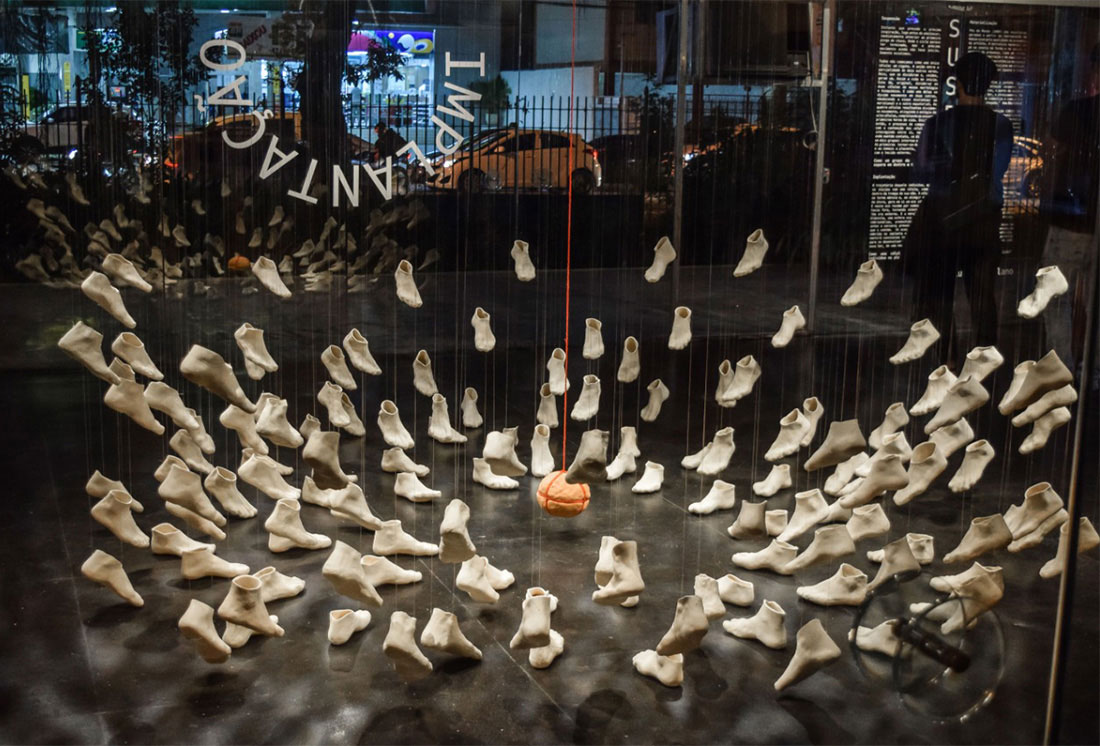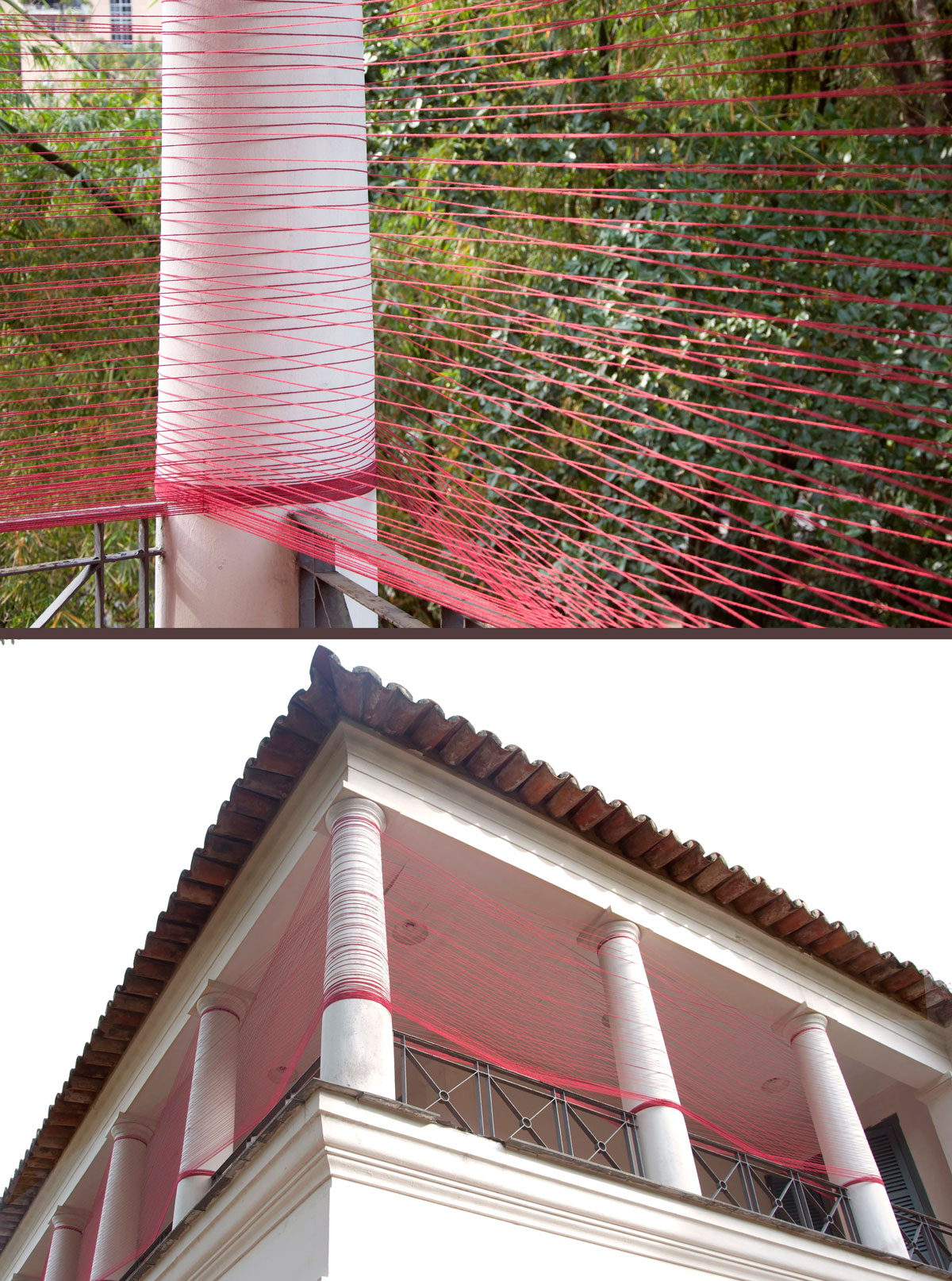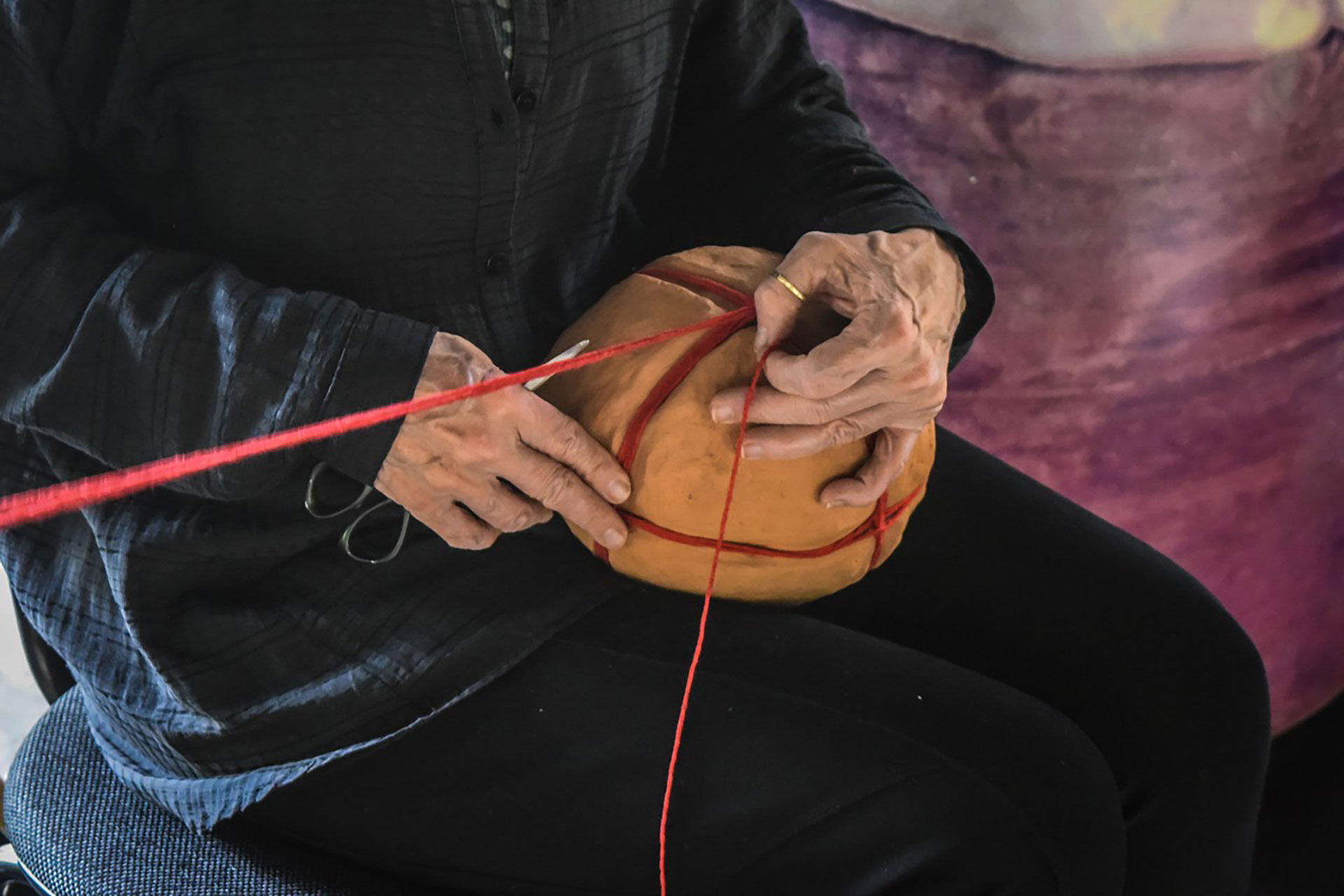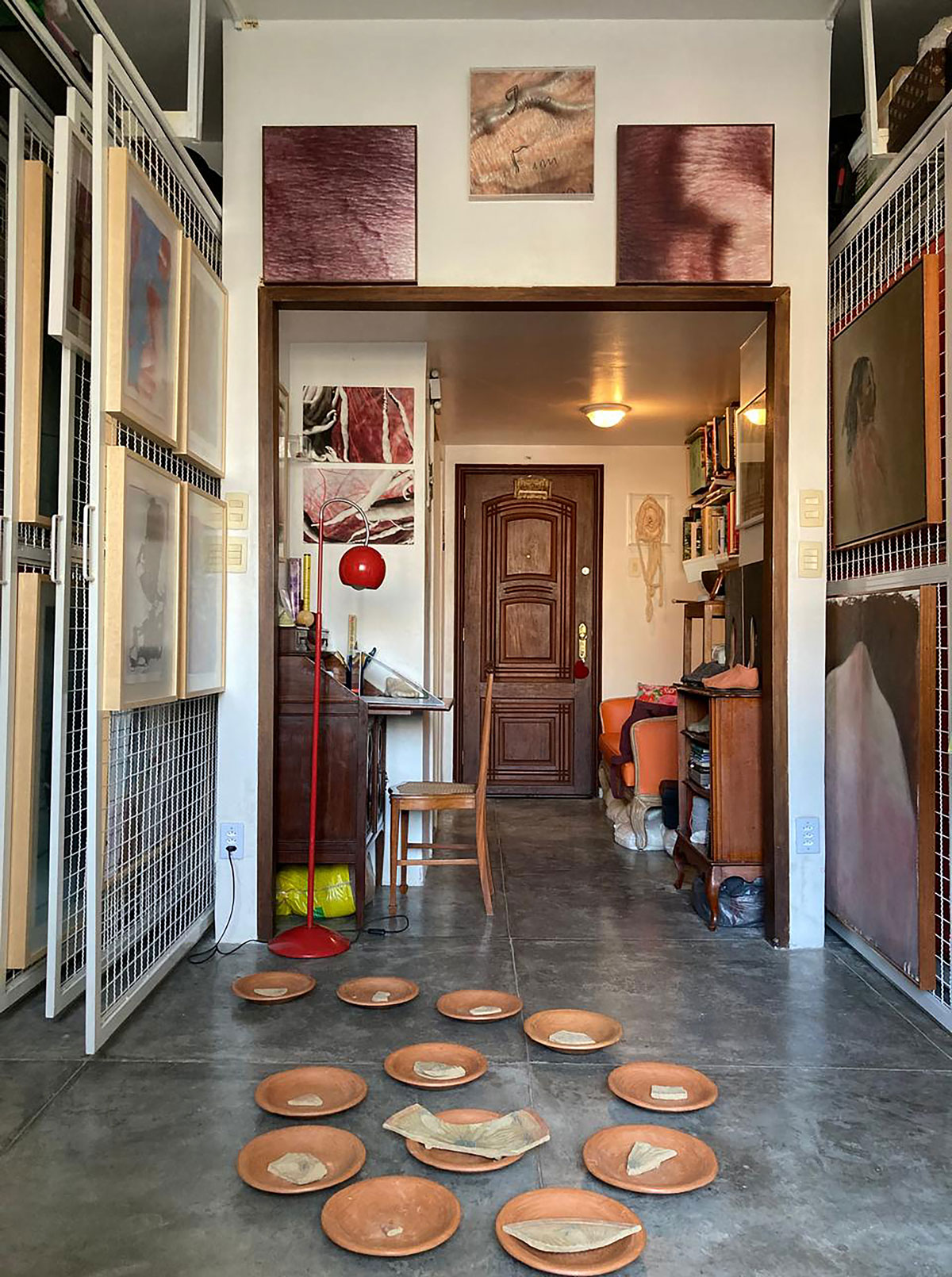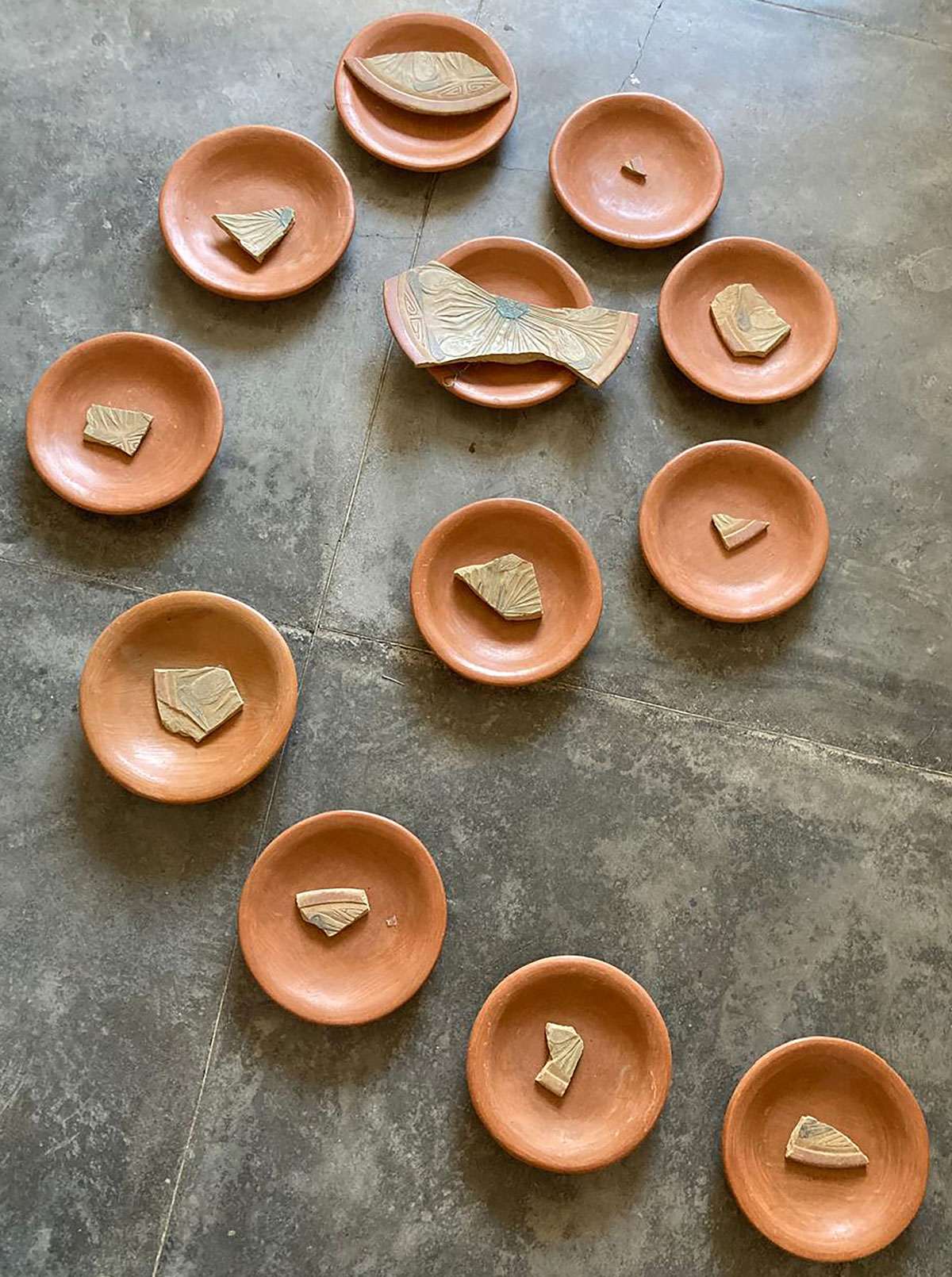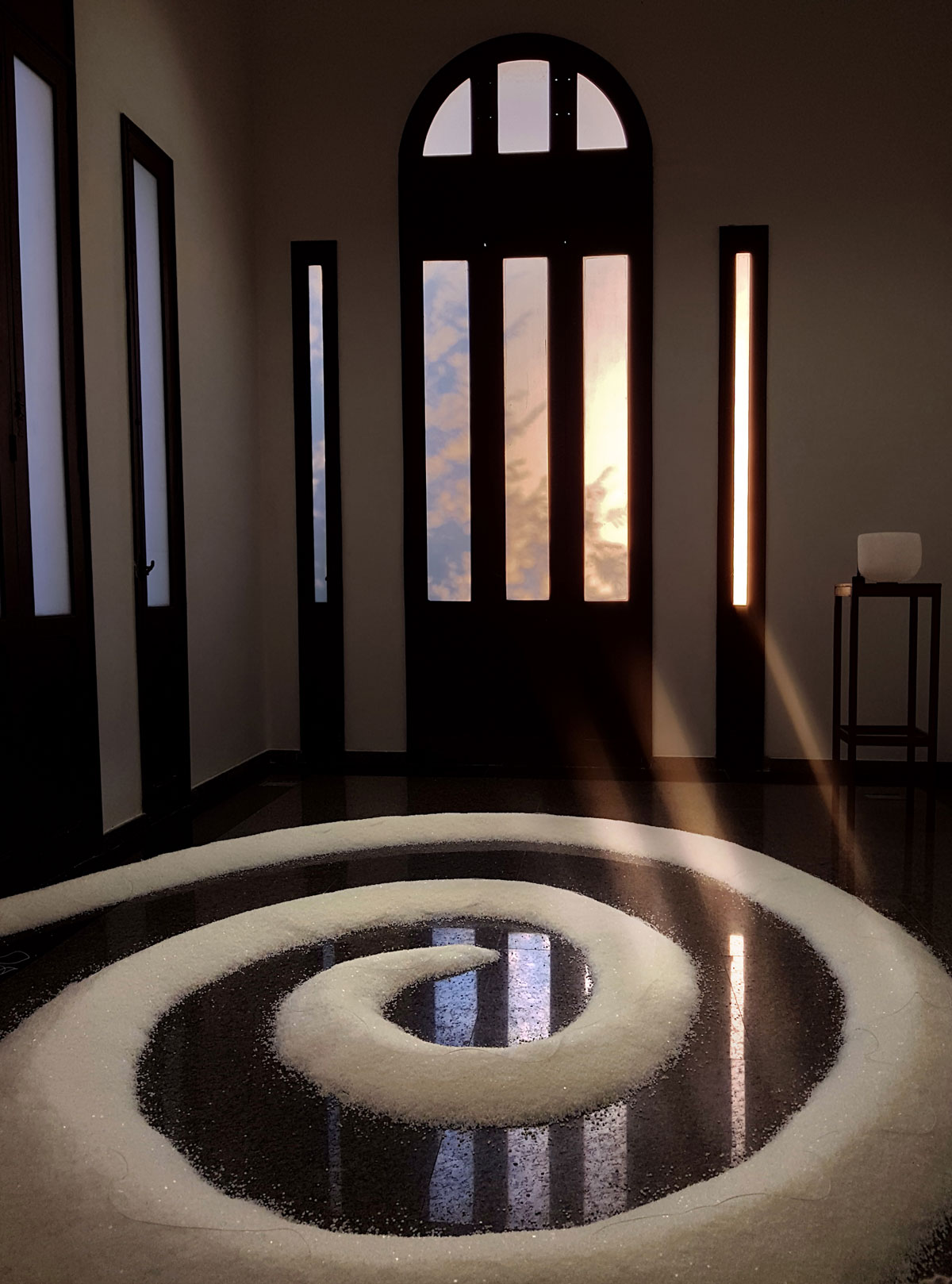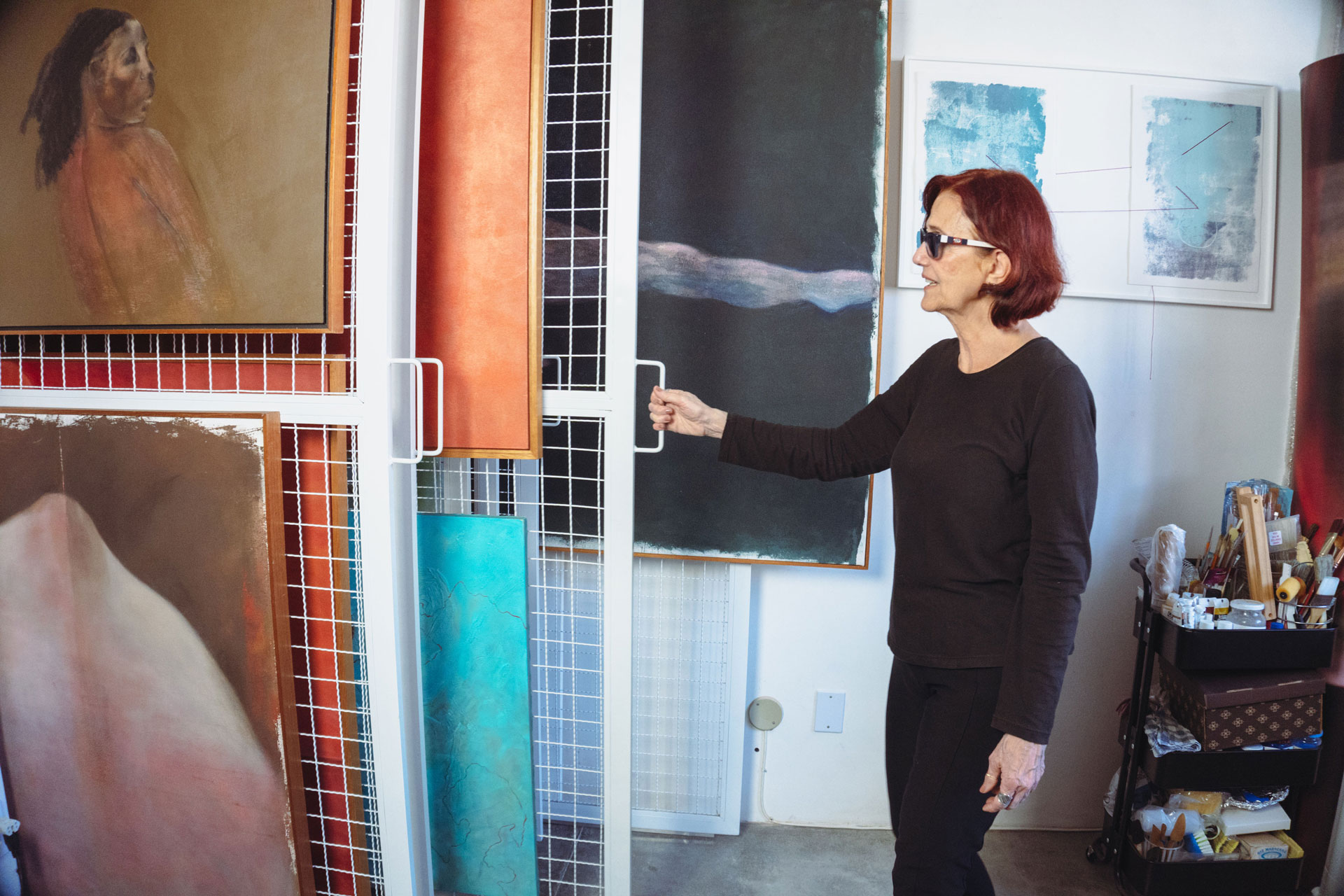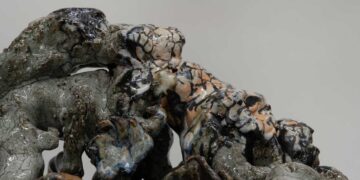Between Essence and Form: A Transdisciplinary Journey
I am a transdisciplinary artist inhabiting a plural body in constant motion. My artistic practice emerges from the difficulty of conceiving—from a void that became a source of creation—sustained by a continuous process of sensitive listening, conscious detachment, and ongoing transformation.
From rehabilitator to studio artist, from the pain of loss to the creation that began to rise within me during pregnancy—each transition shaped not only my identity but the very essence of my artistic practice.
Ana Biolchini, Unitas, 2001. Mixed media painting, 55.1 x 90.6 inches. Photo: Wilton Montenegro. Courtesy of the artist.
Each work is born from the need to explore the multiple layers of human experience, where the boundaries between disciplines dissolve to give way to genuine creation. It is at the intersection of these territories—between who I am and who I am becoming—that my work finds its vital force, challenging limits and expanding expressive possibilities.
I believe that within everything there exists a creative force—an invisible field, prior to form, pulsing in a latent state. As if this energy came from a timeless and infinite space, and upon crossing matter, assumed visible contours in the world. Creation, then, is a dance between the eternal and the transitory—between origin and dissolution.
Ana Biolchini, Buraco Negro, 2017 . Digital photo-collage printed on cotton pape, 29 x 34.6 inches. photo by Peter de Albuquerque. Courtesy of the artist.
The Body as a Territory of Investigation
My path is rooted in listening to the body, through many experiences that opened ways to perceive invisible layers of existence: the density of matter, its folds and boundaries, the relationship between structure and flow. I discovered that the body does not simply execute movements—it is movement, in its relationship with space.
In the body, form and function are inseparable. The curve of the spine is structural, and it is movement. The architecture of the bones is support, and it is dance. Aesthetics, in this context, is not appearance but presence—it is the way one affects the world. The body communicates in axes, gravity, diagonals, pulses. It is through the body that the invisible reveals itself.
From Body Awareness to Artistic Creation
My artistic practice is born from lived experience, and because of that, it embraces multiple languages: painting, photography, ceramics, video, installation, performance. As a transdisciplinary artist, I move between fields of knowledge, opening pathways between body, time, and space. The research with threads is central in this journey: threads that connect memory, ancestry, archetypes, meditation, silence.
These threads are more than material—they are gesture and symbol. They carry invisible stories, like synapses between the body and the collective unconscious. By working with the interweaving of different temporalities—chronos and kairos, chronological time and soul time—my works seek to dissolve barriers between past, present, and future, allowing new temporalities to emerge.
In Pés do Mundo [Feet of the World] , a series of ceramic feet molded one by one from my own, the gesture is ritualistic: an exercise in presence, the intimate contact between clay and skin recording in each foot the testimony of a lived instant, a poetic trace of a crossing. They walk not only upon the earth, but also across memories, invisible layers, affections, and inner geographies.
Since 2009, the Pés do Mundo series has unfolded into site-specific installations that transform with each new activation of the space. The series reinvents itself through its relationship with time, place, and audience, in a continuous process of transmutation. Each new installation receives a subtitle that highlights specific aspects of the context, functioning as a new layer of interpretation. The whole thus manifests an invisible thread of connection between body, territory, and experience.
It is a work in transit, reconfigured with each journey. And one that, as it walks, listens and transforms. In 2024, a two-hour performance was presented on Governors Island, New York, with choreographers Mark Bankin and Laura Mosteller and dancers Collen Edwards and Charlotte Aucella. In 2025, the project expands once again in the form of a Connective Action at the Nós da Dança space in Rio de Janeiro, in partnership with choreographer Edilson Roque.
Performance at Residency Unlimited [RU], Governors Island, 2024. Mark Bankin, Charlotte Aucella and Colleen Edwards. Courtesy of the artist.
Photo: Peter de Albuquerque. Courtesy of the artist.
Spaces That Traverse and Heal
I create works not only to be seen. They invite passage. They are sensitive spaces that act upon the body of the viewer, provoking shifts and, at times, healing. The work does not end in material form—it pulses in the vibratory layers of the sensorial, in the unseen rhythms that inhabit silence and pause.
Art transforms me and is itself transformed, like a relational organism. It acts as a catalyst for integration between human and non-human forces. That is why art is not merely an individual expression but a tool for collective regeneration. In times of fragmentation, creating is also an act of mending relationships—with others, with time, with nature, with that which transcends us.
Ana Biolchini, Casa Amarrada, 2017. Photo: Eduardo Barros. Courtesy of the artist.
The Urgency of Reconnection
We live in a time of growing disconnection—from the body, from listening, from presence. The digital, the acceleration, and now artificial intelligence deepen this rift between humans and their essence. For this reason, creating today is also a political act: it is about proposing spaces where we can reconnect.
Since beginning my artistic journey, I have sought to create experiences that invite a return—to the origin, to the body, to the now. In this context, art becomes a means to restore broken bonds—with oneself, with others, with the planet.
Ancestrality and Continuity: Alguidares de Adalberto
This search for origin gained new layers when I came across the work of my grandfather Adalberto—an artist, professor, and founder of the Free Academy of Fine Arts in Belém do Pará. As early as 1921, he was already recognizing and reclaiming the value of Indigenous Marajoara and Tapajonic art. His legacy echoed in me like a call.
In the series Alguidares de Adalberto, I create a ritual of continuity. The ceramics, inspired by the spirals of Marajoara ancestry, become symbols of a return to the seed of being. The alguidar—a vessel of offering in Afro-Brazilian traditions—becomes a container of memory and the sacred. In this gesture, I again investigate the body: from skin to soul, from form to vibration, from surface to the invisible.
Choreographies for What Is to Come
I propose a shift from the logic of production to the logic of listening. It is about being fully present and aware while creating, observing how the body connects to space. I provoke experiences that activate other ways of being in the world. Creating relationships. Between body and space. Between function and poetry. Between the individual and the collective. Between the human and the more-than-human. I invite the audience to experience with the whole body—to allow themselves to be touched, to resonate, to move together. Here, art opens a dialogue to the verticalization of Being—a simultaneous rooting upward and downward.
The Future of Integrated Practices
As artists, we are choreographers of human experience in the world. And the world urgently needs our integrated dance. How can we create a practice where each work contemplates and traverses, heals and communicates? How can we become creators of experiential ecosystems—space-object-art that not only shelter life but amplify it?
You can find out more about Ana Biolchini at @anabiolchini.art // www.anabiolchini.art
Ana Biolchini in her studio, 2024. Rio de Janeiro. Photo: M. Lekan. Courtesy of the artist.

